We were driving north from Yerevan, towards Aparan. Passing the village of Ushi, my friend Vova asked, “Have you been to Ushi?”
“Of course, I’ve passed here many times”, I replied.
“So you’ve seen Surb Sargis monastery?”
“Surb Sargis? No!” I had not; I was not even aware of its existence. Following a very brief conversation we reversed direction and entered Ushi. I’ve been back two additional times…so far.
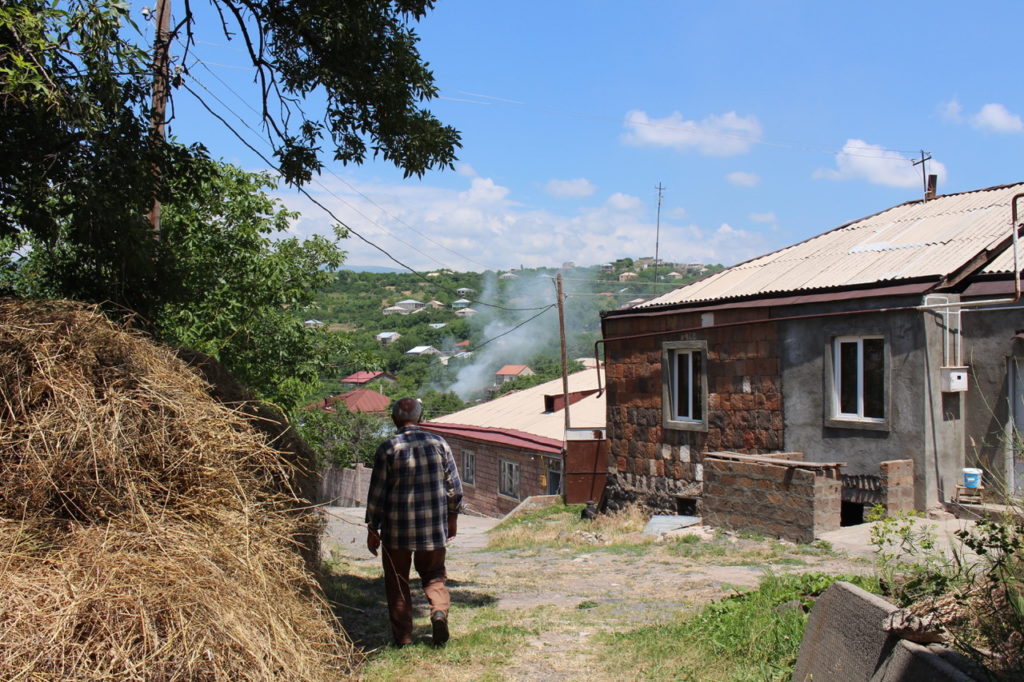
Ushi, roughly 17 miles northwest of Yerevan, is on the west side of the Kasakh River Valley. The road to Ushi is good, and travel time from Yerevan is about 40 minutes. The cab fare is affordable, but it’s best to first negotiate an approximate fare with the taxi driver.
The Surb Sargis Monastery complex, dating from the fifth to 18th century is on the west edge of the village. On a small rise next to the monastery are the remnants of a late Bronze Age to early Iron Age settlement, dated to the second or first millennium B.C. The monastery is spectacular. A car can get to within 50 yards of the monastery, then it’s a short walk up a few stone stairs.
History
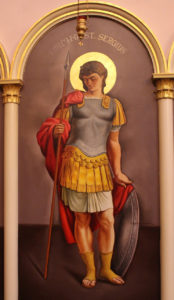
Sargis, the saint the monastery is named after, was a military officer, appointed by Byzantine emperor Constantine the Great[1], to be the general in charge of Cappadocia near the border of Western Armenia. Sargis was a Christian and probably, though not for certain, Armenian.
Constantine was the first Roman/Byzantine emperor to accept Christianity. Forty-two years after his death his nephew, Julian the Apostate, became emperor and began persecuting Christians. Sargis resigned his military commission and sought refuge in Armenia with his son Martiros where he was offered protection by Armenian King Arshak II.[2]
But as Julian’s army advanced eastward the Persian king Shapur II, hearing of Sargis’ military skill, offered Sargis a command position in his army. Later, realizing that Sargis and many of his soldiers were Christian, King Shapur tried to force them to abandon their faith and convert to Zoroastrianism.
Defying Shapur’s orders, Sargis’ son Martiros, as well as many of his Christian soldiers, were killed. Sargis chose martyrdom rather than renouncing his faith; he was beheaded in the fourth century. His body was buried in Namyan, Mazandaran province, Persia[3] by some of his soldiers. His remains were brought back to Armenia by Mesrob Mashtots and buried in the village of Ushi.
Legends
Surb Sargis is the patron of young people and young lovers. Legends and traditions abound. One in particular involves a father trying to forcibly marry his daughter, as the daughter fights to resist. At the limit of her ability to oppose her father, she calls for help from Surb Sargis. When he arrives she runs to him, jumps on the back of his horse, and is rescued. Fleeing from the father, Surb Sargis conjures up a storm to thwart his pursuers. Quite often Surb Sargis is assisted in his noble deeds by storms and the wind.
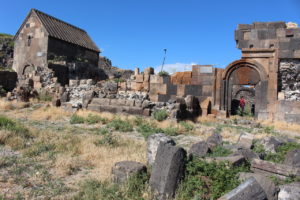
In another legend, in the village of Dasht, in Armavir province, there is a hill called Ardar Davit (David the Just). Hovhannes, a villager, told me that according to local folklore the sword of Sasuntsi Davit is buried under the hill. From the top of the hill were visible circular depressions in a field. These, according to local folklore, were created by the hoofs of Surb Sargis’ horse. In other places, as well, are marks attributed to hoofprints of Surb Sargis’ horse.
Surb Sargis’ holiday falls between Jan. 18 to Feb. 23, during which a special Surb Sargis halvah [a soft, fudgelike candy made out of sesame paste] is served. On the evening before the day of Surb Sargis, young men and women eat salty pastries and refrain from drinking water. Whoever, in their dreams, brings them water to quench their thirst is prophesied to be their future soulmate.
The Monastery
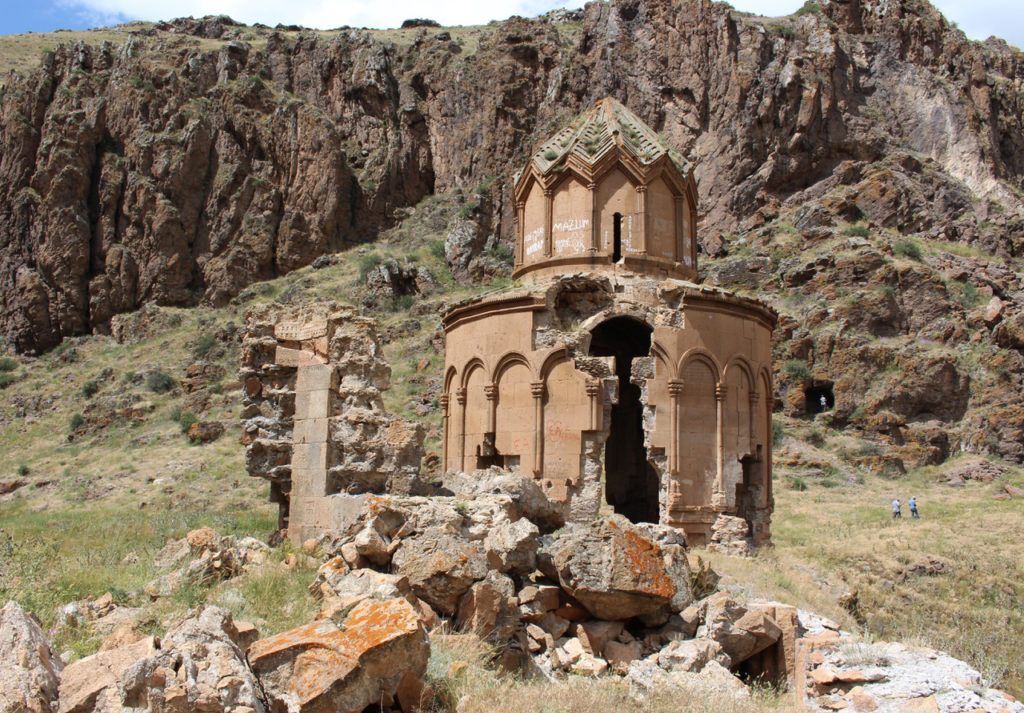
A church was built over Surb Sargis’ grave in the fifth century. It is the oldest of 220 churches dedicated to Surb Sargis in Armenia. Other structures continued to be built until the 18th century. From the 12th to the 13th century, the Zarkarian brothers, officers and confidants of Queen Tamar of Georgia, succeeded in driving out Muslim invaders from large parts of Armenia and Georgia.
Prince Vachutan was appointed hereditary prince of this region and, with his wife Mama-Khatun, built or renovated many churches and cultural edifices. They built Surb Astvatsatsin church (Holy Mother of God) at the monastery in the early 13th century. Next to the church is its gavit [narthex].
Later, in 1654, the complex was surrounded by fortified walls. The monastery includes housing for monks, storage areas, a wine press, and other structures to support the monastic community and guests. Ownership of a number of villages provided financial support for the monastery. Earthquakes in 1769 and again in 1827 reduced the complex to ruins. Surb Sargis was an important cultural and spiritual site, which played an important role in Armenian history.
Culture
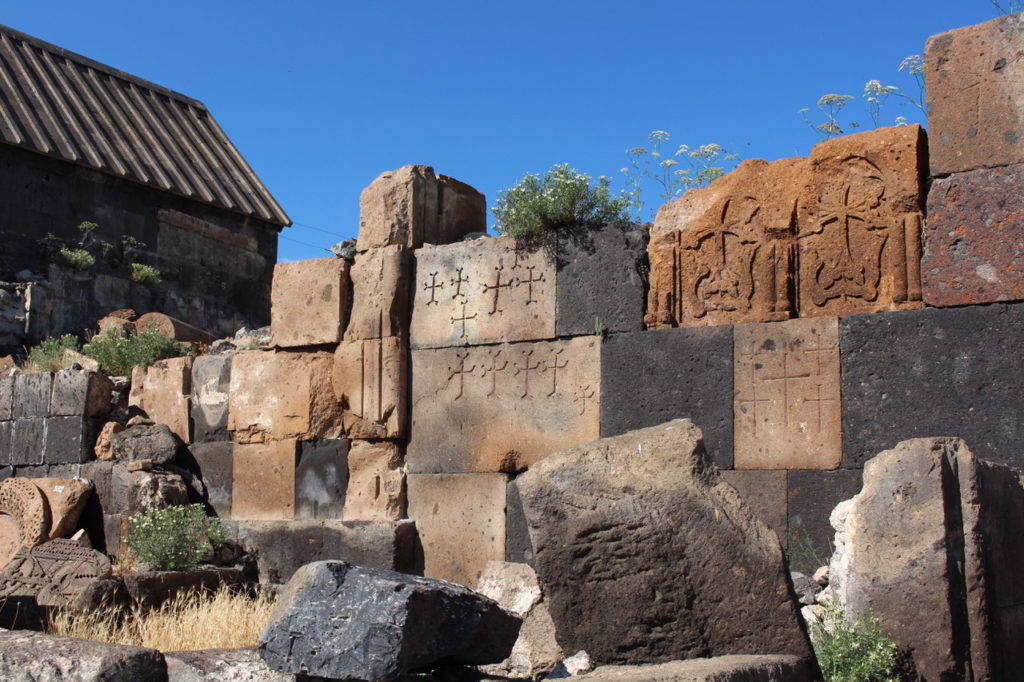
The first Armenian language book printed on a printing press was the “Urbatagirk” (“Friday Prayer Book”) published in Venice by Hakob Meghapart in in 1512. The book consisted of 124 pages. Printing an Armenian Bible, however, would require many more pages and would be far more costly.
In the early 1600s, wealthy Armenian merchants from Nor Julfa in Persia offered to fund the printing of an Armenian Bible. In 1630 both Catholicos Movses III Tatevatsi and the clergy of Nor Julfa in Persia sent letters to the Pope asking for permission to do so in Rome, but the Pope refused this and subsequent requests.
Hovhannes Ankiuratsi, a translator for the Venetian ambassador in Smyrna, suggested that it would be easier to print the Bible in Holland. Avedis Ghlijents, a wealthy Armenian merchant in Amsterdam, paid the expenses that had accumulated so far, and invited his brother, Vartabed Voskan Yerevantsi, a prior (official) of Surb Sargis in Armenia, to take charge of the printing.
Voskan Yerevantsi arrived in Amsterdam 1664 and with the help of some others, completed the job in 1668. Voskan Yerevantsi was also responsible for renovations to Surb Sargis monatery. Thus, Surb Sargis played an important role in the publication of the first Bible in the Armenian language. Five thousand copies were published. [4]
Excavations
In the 1830s, visitors to Surb Sargis could view only ruins of the monastery poking through the surface of the soil that had accumulated over the site. Most intact was the small church containing the relic of Surb Sargis. Thanks to the patronage of Archbishop Shahen Ajemian, Dean of Yerevan State University’s Department of Theology, a project to excavate and study the site began in 1999 under the auspices of Armenia’s Institute of Archaeology and Anthropology. The project’s lead archaeologist was Dr. Frina Babayan.
Repairs to Surb Sargis church and other structures were made and finds documented. Some villagers in Ushi told this author that some government officials stipulated that Archbishop Ajemian should fund this project through them or their departments rather than directly. The archbishop refused, apparently lacking confidence that all the funds would be used for their intended purpose.
Thus, after three years the project prematurely came to a halt. This was reminiscent of a project I was involved in to help renovate and preserve the Shengavit Archaeological Site in Yerevan, a settlement dating to about 4,000 B.C. with a small museum sorely in need of refurbishing. When we refused to hand over funds collected from the Diaspora under the auspices of the Cambridge-Yerevan Sister City Association (CYSCA), work on this project had to be halted.[5]
Villagers in Ushi hoped that renovation and preservation of the site would have provided tourism revenue for the village. Plans were in place to widen the road to the monastery, thus allowing access by small minibuses. Perhaps amenities could be made available for visitors as well. Intricately carved stones, which were previously excavated, now lie on the ground exposed to the elements. A tall wall near Surb Astvatsatsin is standing, braced up by wooden supports, which undoubtedly will decay and result in the collapse of the wall.
This is an immensely impressive and easily accessible site. It allows visitors to visualize life in a medieval Armenian monastery and to look in amazement at wonderful stone carvings. The scenery towards Mt. Ararat is great, even when summer haze obscures the view a bit.[6]
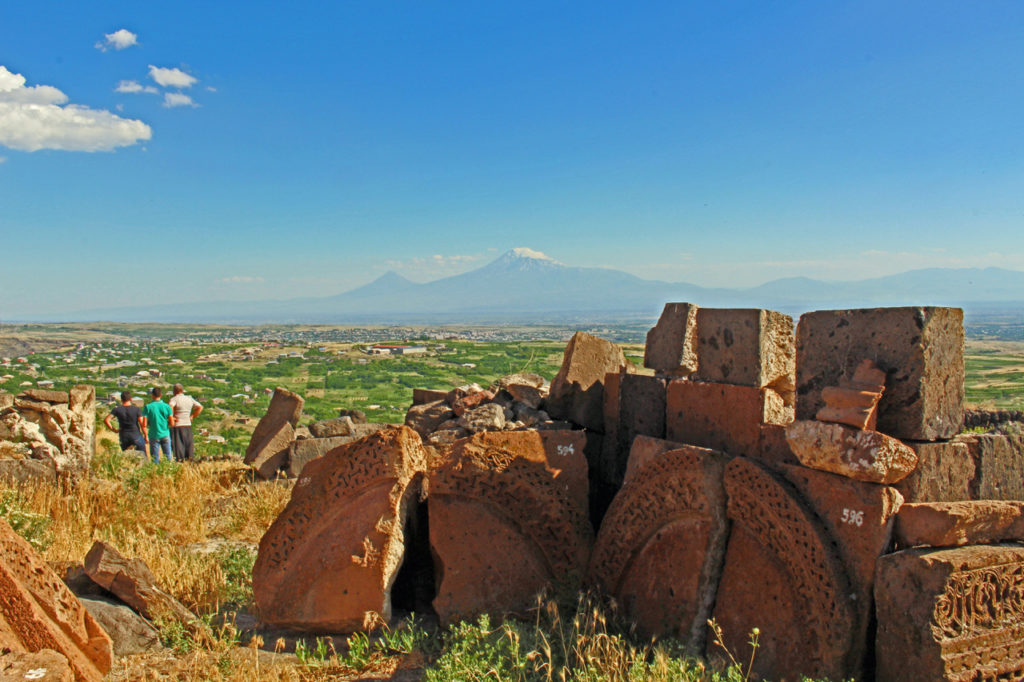
It is hoped that means can be found to resume the excavation, renovation, preservation, and study of Ushi’s Surb Sargis Monastery.
Notes
- Ruled Western Roman/Byzantine Empire from 306-337 A.D. ↑
- Ruled from 350-368 A.D. Some sources indicate King Tigran VII but his reign does not correspond to this time period. See reference 3 below. ↑
- A Brief Report on the Activities of Research on Armenian Architecture Organization for the Year 2003, http://www.raa.am, http://raa-usa.org . Other sources indicate Sp. Sargis was buried at Daghman, Persia or in Assyria. ↑
- For more details see: The Heritage of Armenian Literature, Volume III, From the Eighteenth Century to Modern Times; Hachikyan, Basmajian, Franchuk, Ouzounian; Wayane State University Press, 2005 ↑
- See http://hetq.am/eng/news/56138/revisiting-armenias-shengavit-historical-and-archaeological-culture-preservewill-it-survive-current-mismanagement.html , or search for “shengavit Dagdigian” ↑
- Documentation for this site is on the Internet; search for “Surb Sargis” or “Ushi”. Also Dr. Frina Babayan has published a very informative tri-lingual (Armenian, Russian, English) booklet about the site. It is available from Abril Books in California. ↑
Author information
The post Unseen Armenia: Ushi and Surb Sargis Monastery appeared first on The Armenian Weekly.
Source: Armenian Weekly
Link: Unseen Armenia: Ushi and Surb Sargis Monastery
